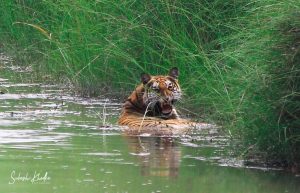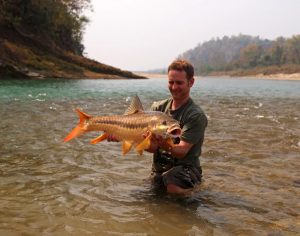Nepal’s rich biodiversity and unique ecosystems face several threats that impact wildlife and habitats. Some of the significant threats include:
- Habitat Loss and Fragmentation:
- Deforestation: Widespread deforestation for agriculture, timber, and infrastructure development has led to the loss of natural habitats, affecting various species.
- Urbanization: Rapid urban expansion encroaches upon wildlife habitats, fragmenting landscapes and disrupting migration routes.
- Poaching and Illegal Wildlife Trade:
- Rhino and Tiger Poaching: Iconic species like rhinos and tigers face the threat of poaching for their horns, bones, and other body parts, driven by demand in illegal wildlife trade markets.
- Illegal Logging: Some wildlife is threatened indirectly through illegal logging, which reduces forest cover and disrupts ecosystems.
- Climate Change:
- Temperature Changes: Climate change leads to alterations in temperature and precipitation patterns, impacting the distribution and behavior of wildlife.
- Glacial Retreat: Melting glaciers in the Himalayas affect river ecosystems and the availability of water resources for both wildlife and human communities.
- Human-Wildlife Conflict:
- Crop Raids: As human settlements expand into wildlife habitats, conflicts arise due to animals raiding crops, leading to retaliatory killings and habitat degradation.
- Livestock Grazing: Grazing by domestic animals can compete with and degrade natural habitats, affecting native flora and fauna.
- Invasive Species:
- Introduced Species: Non-native species, whether intentional or accidental introductions, can outcompete native species, disrupt ecosystems, and lead to biodiversity loss.
- Pollution:
- Water Pollution: Pollution from agricultural runoff, industrial discharge, and improper waste disposal can degrade water quality, affecting aquatic ecosystems.
- Air Pollution: Urban and industrial pollution can have adverse effects on both terrestrial and aquatic wildlife.
- Infrastructure Development:
- Roads and Hydropower Projects: The construction of roads and hydropower projects can result in habitat fragmentation, altering water flow and affecting aquatic ecosystems.
- Lack of Conservation Awareness:
- Community Engagement: Limited awareness and involvement of local communities in conservation efforts can undermine initiatives to protect wildlife and habitats.
Addressing these threats requires a multi-faceted approach, including habitat conservation, community engagement, anti-poaching measures, sustainable development practices, and global cooperation to combat issues like climate change and illegal wildlife trade.
Partner links from our advertiser:
- Real-time DEX charts on mobile & desktop — https://sites.google.com/walletcryptoextension.com/dexscreener-official-site-app/ — official app hub.
- All official installers for DEX Screener — https://sites.google.com/mywalletcryptous.com/dexscreener-apps-official/ — downloads for every device.
- Live markets, pairs, and alerts — https://sites.google.com/mywalletcryptous.com/dexscreener-official-site/ — DEX Screener’s main portal.
- Solana wallet with staking & NFTs — https://sites.google.com/mywalletcryptous.com/solflare-wallet/ — Solflare overview and setup.
- Cosmos IBC power-user wallet — https://sites.google.com/mywalletcryptous.com/keplr-wallet/ — Keplr features and guides.
- Keplr in your browser — https://sites.google.com/mywalletcryptous.com/keplr-wallet-extension/ — quick installs and tips.
- Exchange-linked multi-chain storage — https://sites.google.com/mywalletcryptous.com/bybit-wallet — Bybit Wallet info.







